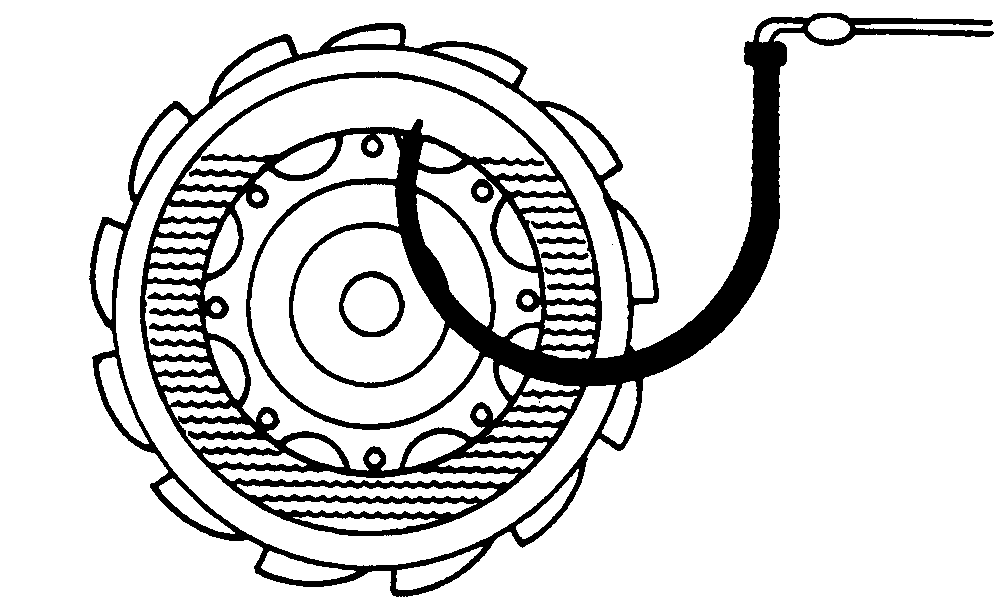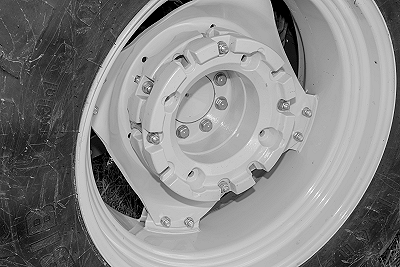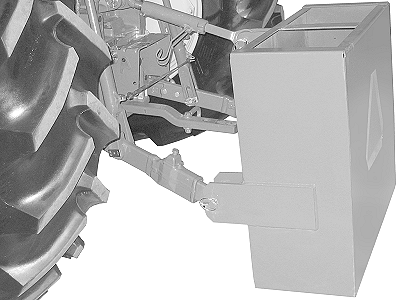Rear Ballast
 Prevent possible injury or death from a machine rollover.
Add the necessary amount of ballast to the tractor. The amount of
ballast listed is the minimum required for normal loader operation.
For some operations, additional ballast can be required to maximize
stability.
Prevent possible injury or death from a machine rollover.
Add the necessary amount of ballast to the tractor. The amount of
ballast listed is the minimum required for normal loader operation.
For some operations, additional ballast can be required to maximize
stability.
Prevent possible tractor damage. Use hitch ballast. Without hitch ballast, the front axles or other components can be overloaded during loader operation.
Proper ballasting is an important factor in tractor/loader stability and performance. Maximum productivity can be achieved only if the tractor weight is appropriate for the job.
Ballasting is adding weight to the tractor to give it stability, durability, and more traction. It ensures reliable, productive, and safe performance.
The system (tractor/loader) always requires to be counterbalanced. Depending on the system, there are three possible areas required to add ballast. They can be one or a combination of the following: Fluid in the tires, rear wheel weights, and a 3-point hitch ballast.
To determine how to ballast a tractor when using a loader, always refer to the Specifications section in the Operator’s Manual.
Always refer to the safety and operating information in the Safety section of this Operator’s Manual for operating the loader in terms of safety and stability.

W11502-UN-07OCT88
Fluid Filled Rear Tires
When using fluid in the rear wheels for ballasting, do not fill the tires more than 75% allowing for expansion. Use a mixture of 1.6 kg (3.5 lb) of calcium chloride to 4 L (1 gal) of water when filling the rear tires.

W28398-UN-12MAR18
Rear Wheel Weights

W28412-UN-17MAY18
Ballast Box and 3-Point Hitch
Adding duals to the rear axle can also add to the ballasting weight and provide additional tread width for stability. Refer to the tractor Operator’s Manual for more information on dual tire compatibility.
|
OUO6064,000226C-19-20180525 |


